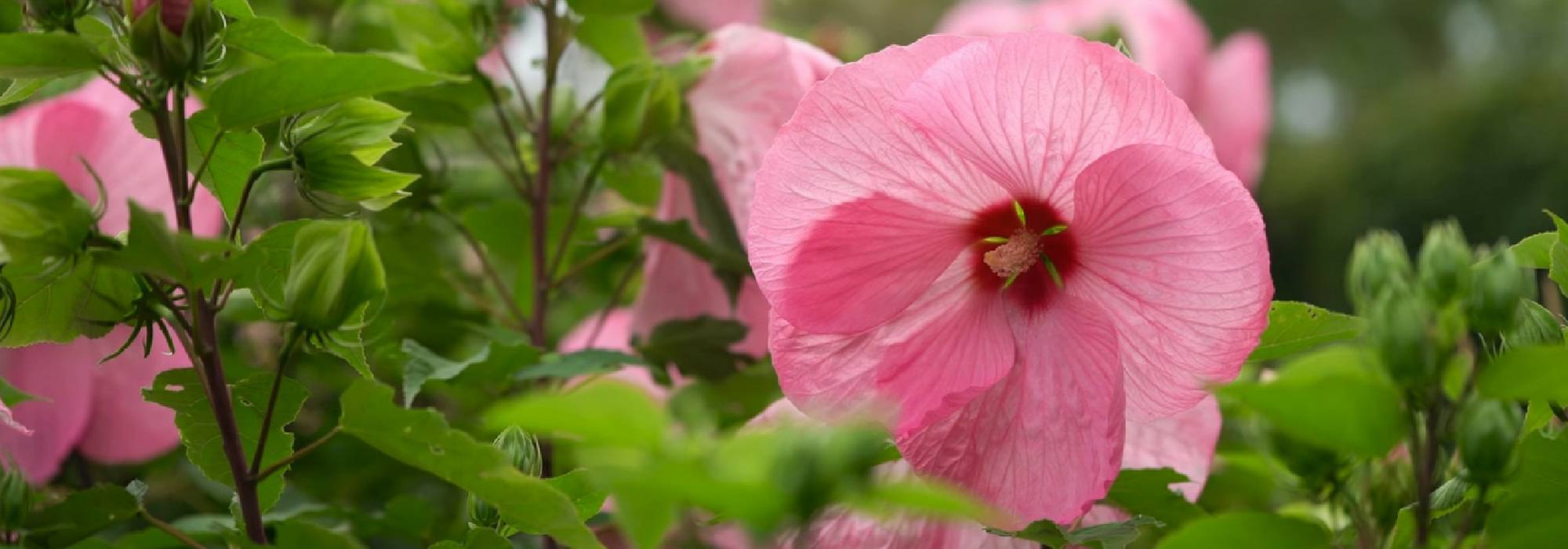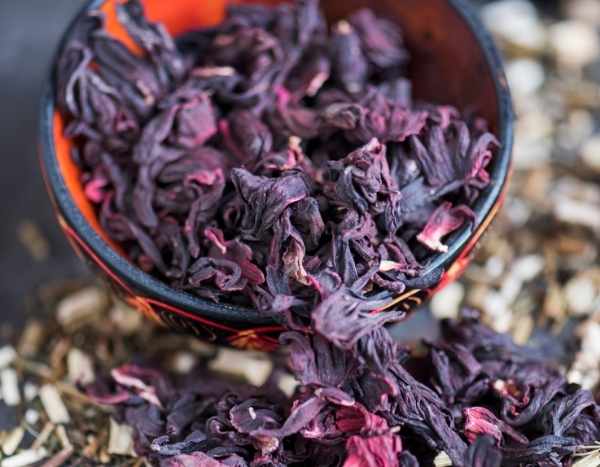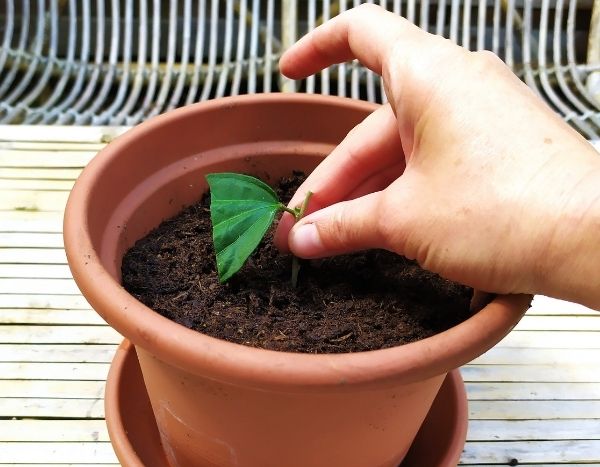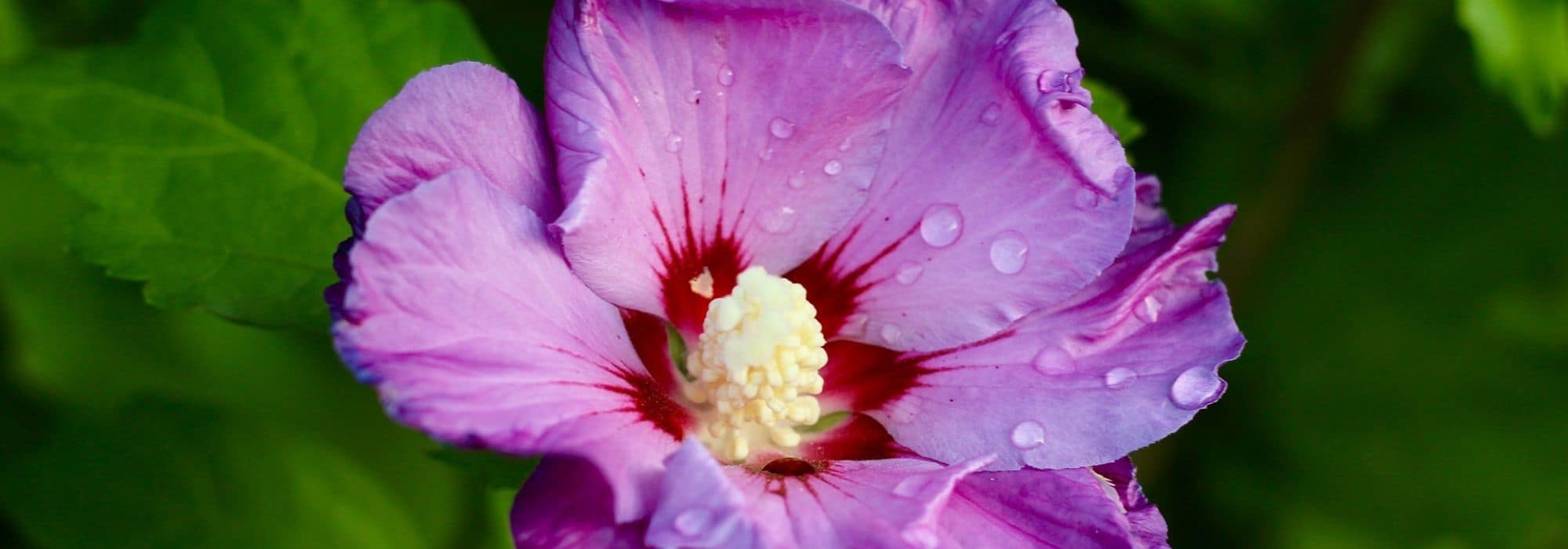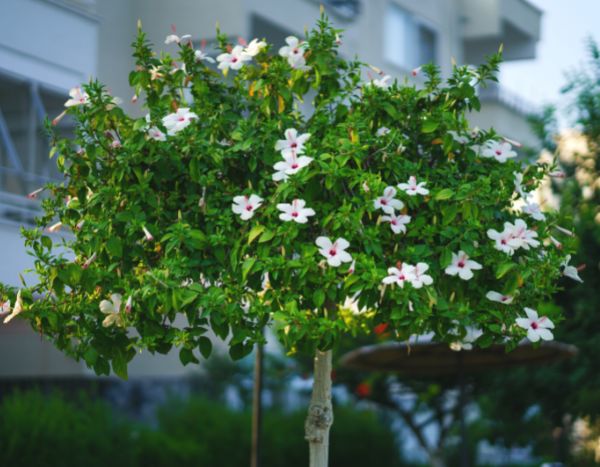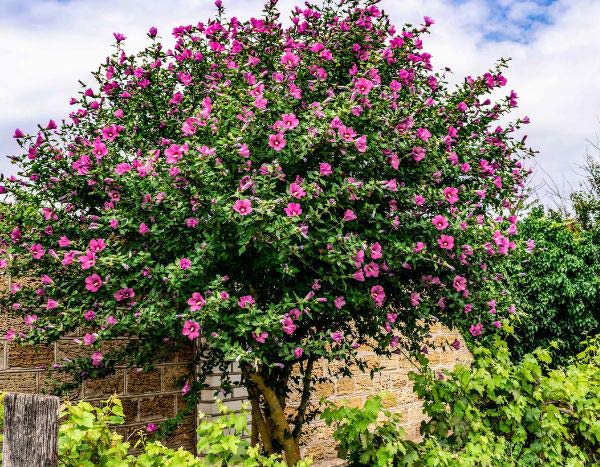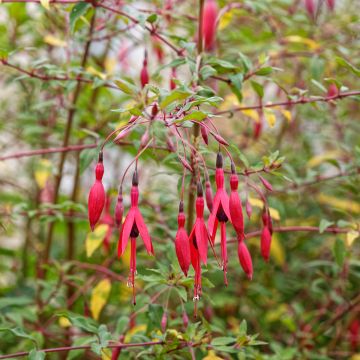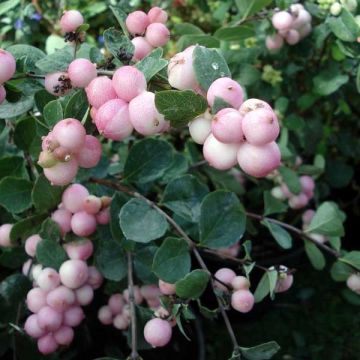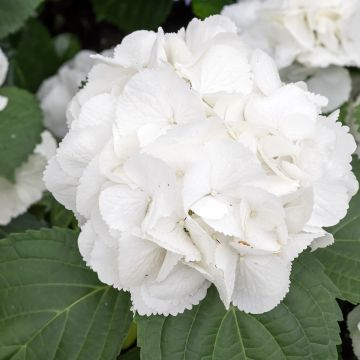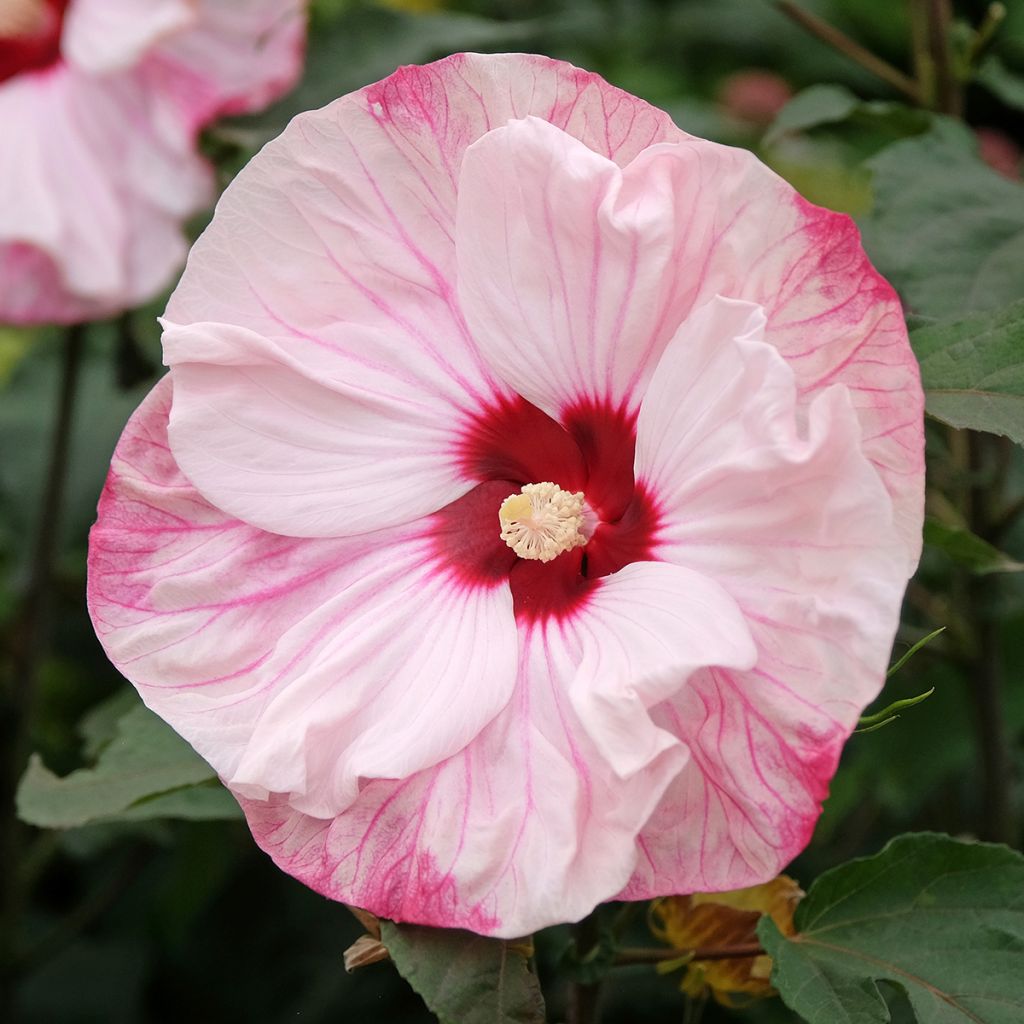

Hibiscus moscheutos Cherry Cheesecake - Swamp Rose Mallow
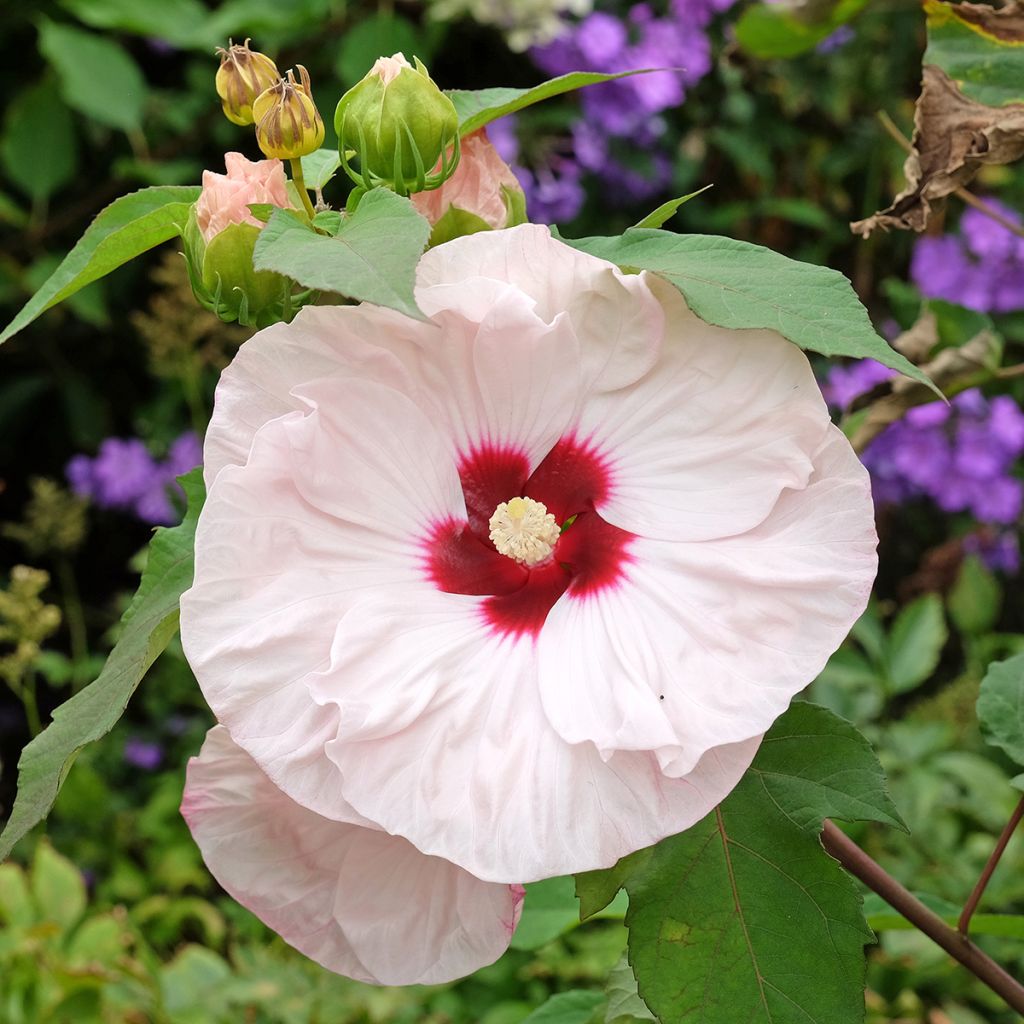

Hibiscus moscheutos Cherry Cheesecake - Swamp Rose Mallow
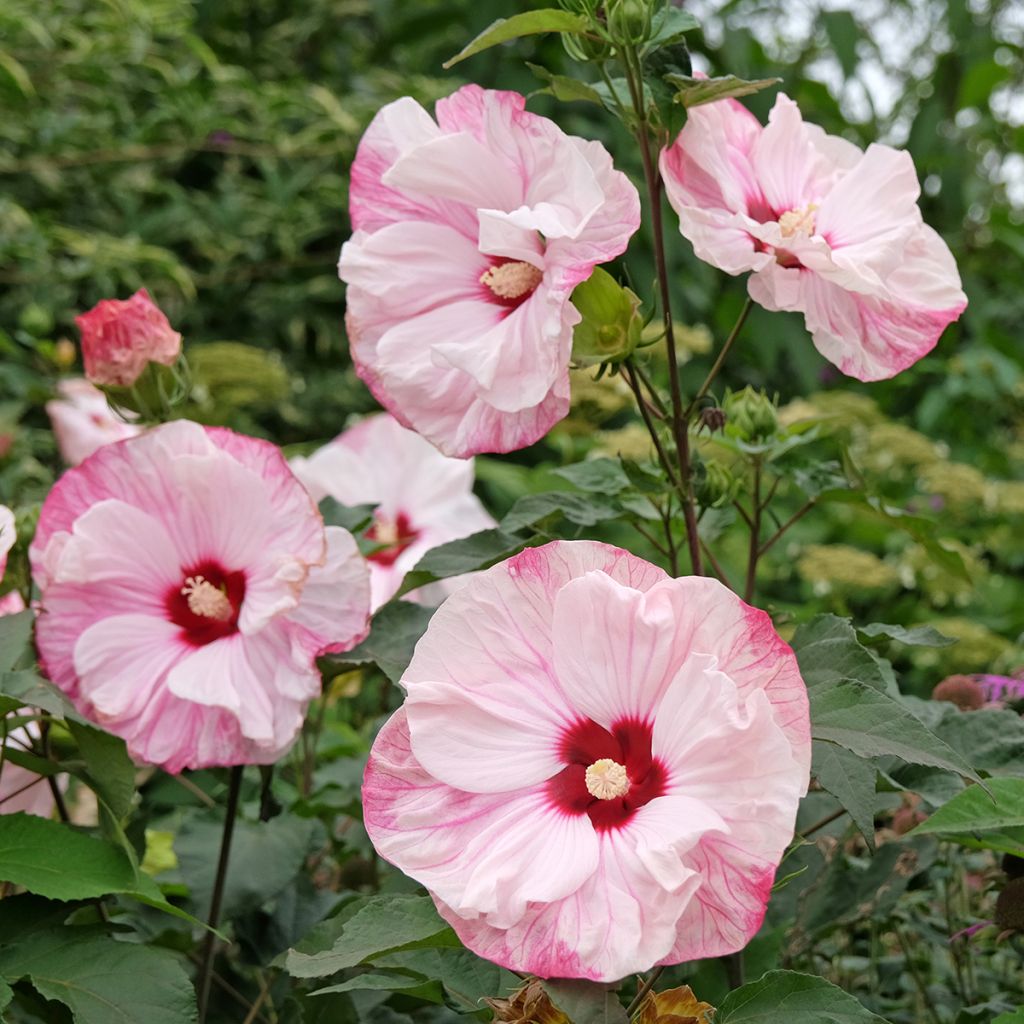

Hibiscus moscheutos Cherry Cheesecake - Swamp Rose Mallow
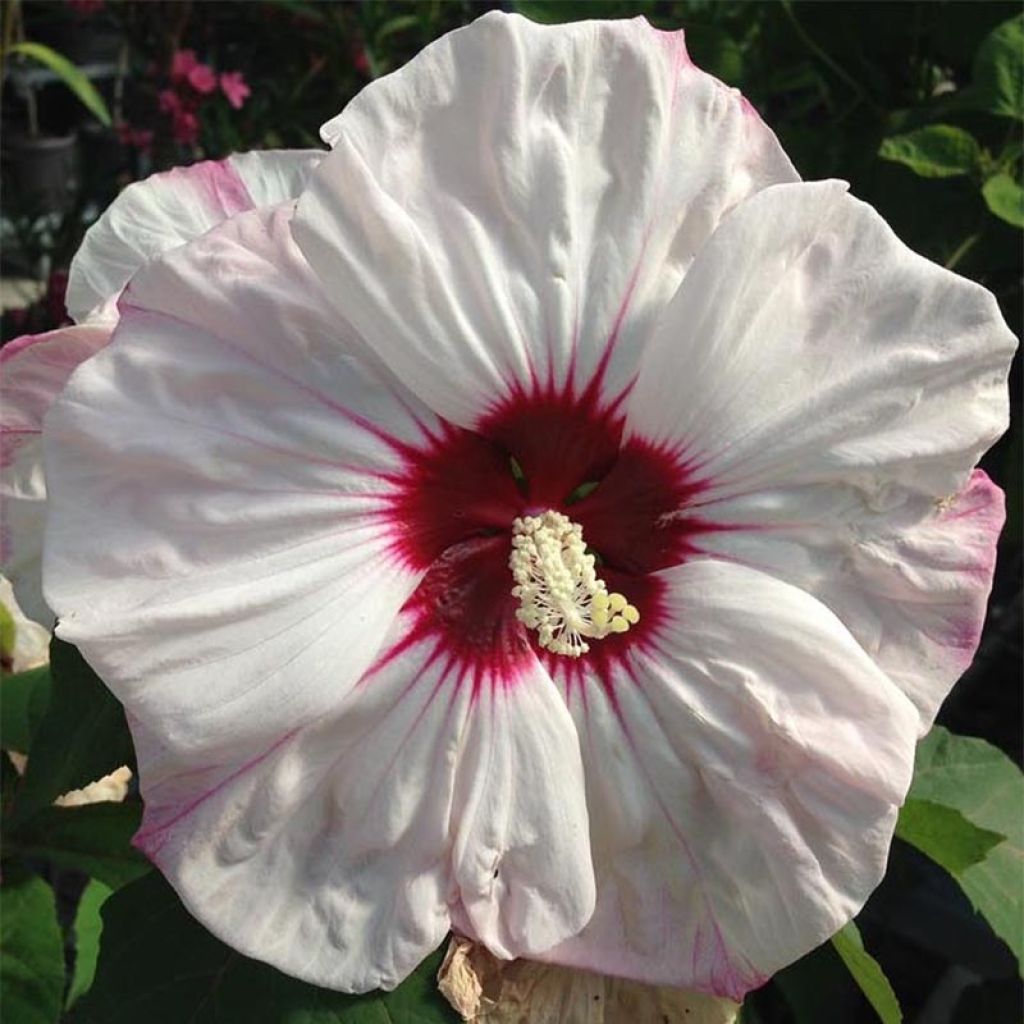

Hibiscus moscheutos Cherry Cheesecake - Swamp Rose Mallow
Hibiscus moscheutos Cherry Cheesecake - Swamp Rose Mallow
Hibiscus moscheutos Cherry Cheesecake SUMMERIFIC
Swamp Rose Mallow, Eastern Rose Mallow, Crimsoneyed Rose Mallow, Marsh Hibiscus
I reiterate my high rating, it's a marvel. Although I pruned it much too late last year, it made up for it by quickly producing new shoots that eventually led to gigantic and magnificent flowers. This young plant is perfect!" Revised translation: "I reiterate my high rating, it's a marvel. Although I pruned it much too late last year, it made up for it by quickly producing new shoots which subsequently resulted in enormous and stunning flowers. This plant is perfect!
Florence, 03/01/2024
Special offer!
Receive a €20 voucher for any order over €90 (excluding delivery costs, credit notes, and plastic-free options)!
1- Add your favorite plants to your cart.
2- Once you have reached €90, confirm your order (you can even choose the delivery date!).
3- As soon as your order is shipped, you will receive an email containing your voucher code, valid for 3 months (90 days).
Your voucher is unique and can only be used once, for any order with a minimum value of €20, excluding delivery costs.
Can be combined with other current offers, non-divisible and non-refundable.
Home or relay delivery (depending on size and destination)
Schedule delivery date,
and select date in basket
This plant carries a 24 months recovery warranty
More information
We guarantee the quality of our plants for a full growing cycle, and will replace at our expense any plant that fails to recover under normal climatic and planting conditions.

Would this plant suit my garden?
Set up your Plantfit profile →
Description
The 'Cherry Cheesecake' Hibiscus moscheutos is a spectacularly hardy perennial for wet terrain. From July to September, it produces huge white flowers with pink markings, reaching up to 20 cm (7.9 in) in diameter. The lush dark green foliage will bring an exotic touch to your flower beds, whether planted along a pond edge in rich compost or in a large pot kept constantly moist in full sun.
The 'Cherry Cheesecake' marsh hibiscus belongs to the Malvaceae family. While we are familiar with bushy hibiscus plants, from the same family and commonly planted in gardens, the Hibiscus moscheutos (formerly H. palustris) are more rarely encountered. This giant perennial, also known as Marsh Mallow, is native to the marshy areas of the Eastern United States and can grow stems over 2 metres (6 feet 7 inches) tall. In our gardens, it generally remains more modest and emerges quite late in spring, between April and May. Its growth is then rapid: in just a few weeks, it forms a lush clump of upright stems adorned with large lobed leaves, emerging from a thick base. From mid-summer to early autumn, huge flowers appear, with open cup-shaped blooms, large rounded and slightly crumpled petals. In the centre, a long tube formed by fused stamens adds grace to the flower. In autumn, the foliage also takes on beautiful golden colours, and then the plant disappears.
The 'Cherry Cheesecake' Hibiscus is a compact variety, forming a dense clump 1.20 to 1.50 m (3 ft 11 in to 4 ft 11 in) in height and width. Its very large flowers, appearing between July and September and reaching 20 cm (7.9 in) in diameter, are white with pale pink veins and bright pink petal margins. The flower's centre is an intense purple-pink. This variety belongs to the Summerific series, obtained by Walter Gardens nurseries in the United States, which is characterised by dark foliage, moderate size, and abundant flowering.
The 'Cherry Cheesecake' Marsh Mallow is, as the name suggests, fond of moist soils. If the soil is rich and consistently moist, the plant will show vigorous growth. In dry or poor soil, it will produce mediocre results. Additionally, it requires plenty of sun to fully express its flowering potential. Despite its exotic appearance, it is hardy and will easily withstand temperatures down to -12, even -15°C (5 °F). Undoubtedly, it is a perennial that brings a great presence to the garden, and it should be placed judiciously: combine it with other plants with an "exotic look" to create a striking scene, such as the Sikkim Banana, 'Himalaya' Arum, Tetrapanax, Rostrinucula dependens, or the tree fern Dicksonia antarctica. If your soil is not moist enough, choose to grow it in a large container, which will provide excellent results as long as the soil does not dry out - allowing you to enjoy it on your terrace!
Hibiscus moscheutos Cherry Cheesecake - Swamp Rose Mallow in pictures
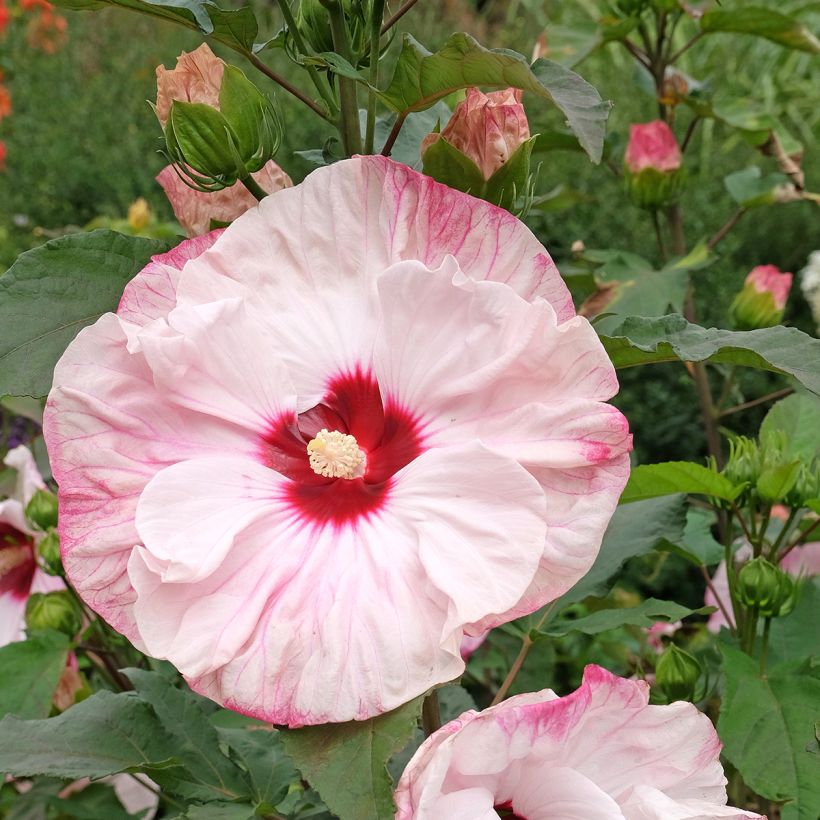

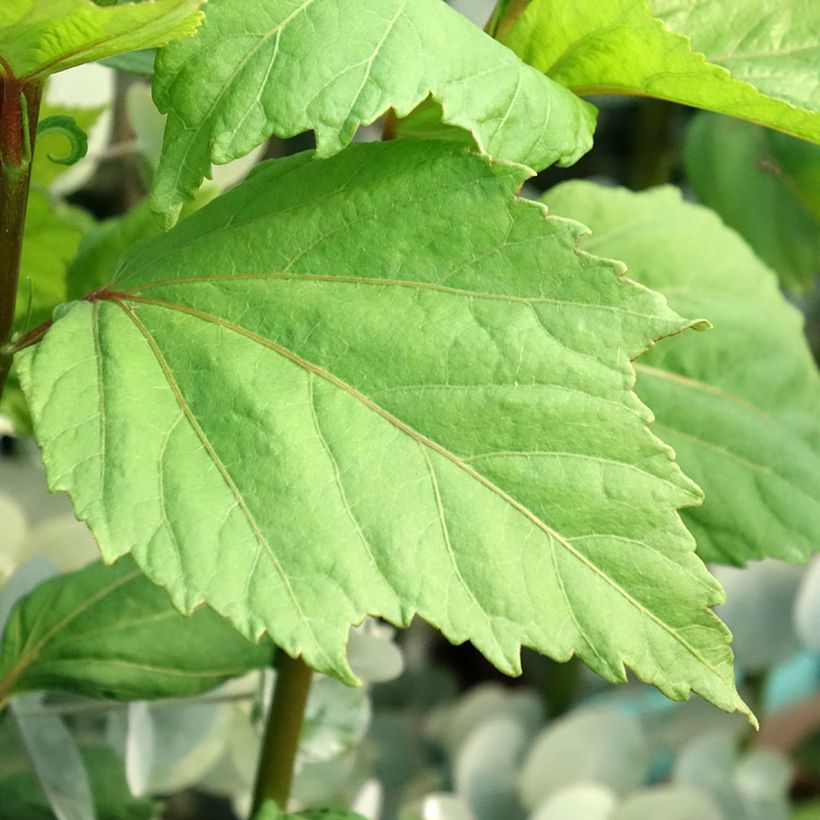

Plant habit
Flowering
Foliage
Botanical data
Hibiscus
moscheutos
Cherry Cheesecake SUMMERIFIC
Malvaceae
Swamp Rose Mallow, Eastern Rose Mallow, Crimsoneyed Rose Mallow, Marsh Hibiscus
Cultivar or hybrid
Planting and care
The moscheutos species of the Hibiscus genus is typically known for its shrub-like appearance. However, it also includes perennials that disappear above-ground during winter. These marsh plants can add an exotic touch to your garden but require rich and humid soil in a warm location. Although they are quite hardy and can tolerate temperatures as low as -15°C (5°F), they require winter protection in colder climates.
To create a bed, follow these steps:
1. Dig a hole that is 40 cm (15.7 in) in all directions.
2. Line it with a waterproof film.
3. Fill the hole with good garden soil and compost.
4. Keep the soil permanently moist during shooting and flowering.
5. Keep the soil moist as soon as the leaves turn yellow in October.
6. Cut back the stems to 5 cm (2 in) from the ground at the end of autumn.
7. Depending on the climate, growth restarts in late spring, April, or May.
Remember that the moscheutos species of the Hibiscus genus requires specific conditions to grow and thrive. It's essential to maintain a marshy state during the growing period and keep the soil moist when the leaves turn yellow. Proper care lets you enjoy a beautiful and exotic touch in your garden.
Planting period
Intended location
Care
Planting & care advice
-
, onOrder confirmed
Reply from on Promesse de fleurs
Similar products
Haven't found what you were looking for?
Hardiness is the lowest winter temperature a plant can endure without suffering serious damage or even dying. However, hardiness is affected by location (a sheltered area, such as a patio), protection (winter cover) and soil type (hardiness is improved by well-drained soil).

Photo Sharing Terms & Conditions
In order to encourage gardeners to interact and share their experiences, Promesse de fleurs offers various media enabling content to be uploaded onto its Site - in particular via the ‘Photo sharing’ module.
The User agrees to refrain from:
- Posting any content that is illegal, prejudicial, insulting, racist, inciteful to hatred, revisionist, contrary to public decency, that infringes on privacy or on the privacy rights of third parties, in particular the publicity rights of persons and goods, intellectual property rights, or the right to privacy.
- Submitting content on behalf of a third party;
- Impersonate the identity of a third party and/or publish any personal information about a third party;
In general, the User undertakes to refrain from any unethical behaviour.
All Content (in particular text, comments, files, images, photos, videos, creative works, etc.), which may be subject to property or intellectual property rights, image or other private rights, shall remain the property of the User, subject to the limited rights granted by the terms of the licence granted by Promesse de fleurs as stated below. Users are at liberty to publish or not to publish such Content on the Site, notably via the ‘Photo Sharing’ facility, and accept that this Content shall be made public and freely accessible, notably on the Internet.
Users further acknowledge, undertake to have ,and guarantee that they hold all necessary rights and permissions to publish such material on the Site, in particular with regard to the legislation in force pertaining to any privacy, property, intellectual property, image, or contractual rights, or rights of any other nature. By publishing such Content on the Site, Users acknowledge accepting full liability as publishers of the Content within the meaning of the law, and grant Promesse de fleurs, free of charge, an inclusive, worldwide licence for the said Content for the entire duration of its publication, including all reproduction, representation, up/downloading, displaying, performing, transmission, and storage rights.
Users also grant permission for their name to be linked to the Content and accept that this link may not always be made available.
By engaging in posting material, Users consent to their Content becoming automatically accessible on the Internet, in particular on other sites and/or blogs and/or web pages of the Promesse de fleurs site, including in particular social pages and the Promesse de fleurs catalogue.
Users may secure the removal of entrusted content free of charge by issuing a simple request via our contact form.
The flowering period indicated on our website applies to countries and regions located in USDA zone 8 (France, the United Kingdom, Ireland, the Netherlands, etc.)
It will vary according to where you live:
- In zones 9 to 10 (Italy, Spain, Greece, etc.), flowering will occur about 2 to 4 weeks earlier.
- In zones 6 to 7 (Germany, Poland, Slovenia, and lower mountainous regions), flowering will be delayed by 2 to 3 weeks.
- In zone 5 (Central Europe, Scandinavia), blooming will be delayed by 3 to 5 weeks.
In temperate climates, pruning of spring-flowering shrubs (forsythia, spireas, etc.) should be done just after flowering.
Pruning of summer-flowering shrubs (Indian Lilac, Perovskia, etc.) can be done in winter or spring.
In cold regions as well as with frost-sensitive plants, avoid pruning too early when severe frosts may still occur.
The planting period indicated on our website applies to countries and regions located in USDA zone 8 (France, United Kingdom, Ireland, Netherlands).
It will vary according to where you live:
- In Mediterranean zones (Marseille, Madrid, Milan, etc.), autumn and winter are the best planting periods.
- In continental zones (Strasbourg, Munich, Vienna, etc.), delay planting by 2 to 3 weeks in spring and bring it forward by 2 to 4 weeks in autumn.
- In mountainous regions (the Alps, Pyrenees, Carpathians, etc.), it is best to plant in late spring (May-June) or late summer (August-September).
The harvesting period indicated on our website applies to countries and regions in USDA zone 8 (France, England, Ireland, the Netherlands).
In colder areas (Scandinavia, Poland, Austria...) fruit and vegetable harvests are likely to be delayed by 3-4 weeks.
In warmer areas (Italy, Spain, Greece, etc.), harvesting will probably take place earlier, depending on weather conditions.
The sowing periods indicated on our website apply to countries and regions within USDA Zone 8 (France, UK, Ireland, Netherlands).
In colder areas (Scandinavia, Poland, Austria...), delay any outdoor sowing by 3-4 weeks, or sow under glass.
In warmer climes (Italy, Spain, Greece, etc.), bring outdoor sowing forward by a few weeks.






























